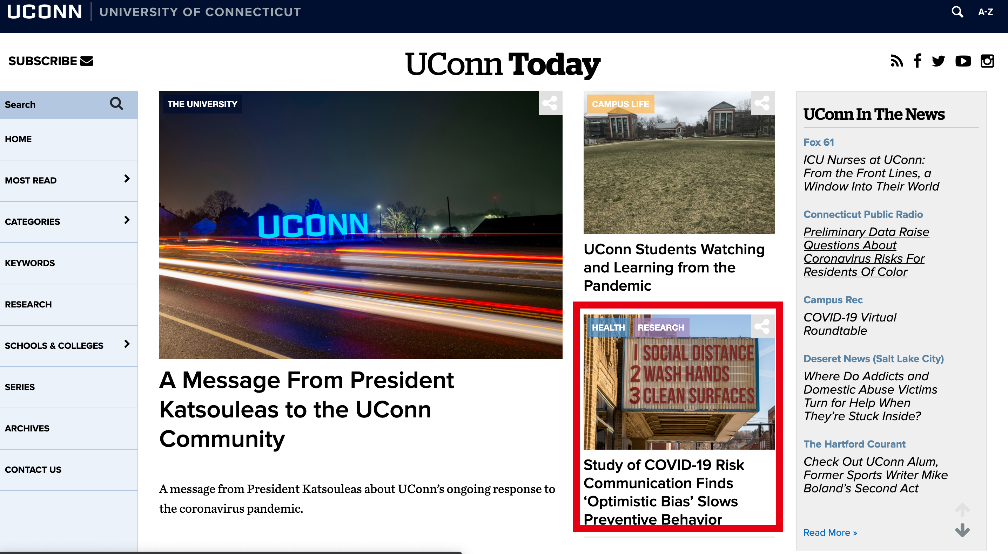A study of risk communication on the coronavirus epidemic in China, authored by a ZJU researcher, indicates that overcoming “optimistic bias” will influence an individual’s perception about disease and make them more likely to adopt preventive behaviors. The researcher, Hongliang Chen, assistant professor in the College of Media and International Culture at Zhejiang University, collaborated with Dr. David Atkin, professor in the Department of Communication at the University of Connecticut.

Risk communication is defined as the exchange of information among individuals, organizations, and groups aimed at improving perceptions and management of risk. Optimistic bias is the perception by individuals that they are less likely than the average person to experience negative events.
The study, which drew data from nearly 1,600 respondents from 31 provinces of China, investigates how risk communication influences individual perceptions about the disease and preventive behaviors. The survey was conducted between Jan. 31 and Feb. 4 of this year, when the virus was spreading throughout China. The study has found that exposure to media risk communication aid in lowering perceived barriers, which will in turn increase the implementation of preventive behaviors. Compared with information on COVID-19 released by medical providers and non-government organizations, government information sources had a greater influence on individual perceptions about the disease and behavioral change.
The researchers said well-designed risk communication can reduce the harm presented by an infectious disease outbreak, noting previous studies have demonstrated how both traditional media and emerging digital platforms were effective in promoting healthy behavioral changes. They said that in crisis situations,“media represent the public’s primary information source on health risk threats and appropriate behavioral response”, and that the emergence of social media and mobile applications has accelerated the circulation of health information.
“It’s problematic to have people thinking they’re invulnerable,” authors said. “We have to be aware that folks who have an almost naive bias are going to be more resistant to the messages about mitigation behavior such as six-feet distance, wash your hands, and remain home. The key is to find an appropriate optimal level of threat to convey to people without demoralizing them about impending doom.”
“The overwhelming information—including mixed messages spread over multiple channels–is likely to confuse individuals and lead to counter-productive behavior,” they said. “Study findings reinforce the need to incorporate interpersonal communication as part of a larger program focused on public health education. Finally, as optimistic bias is one of the major barriers to engage in risk-reduction behaviors, future risk communication programs should consider how to correct such misperceptions.”
About the researcher
Hongliang Chen is a researcher of the Hundred Talents Program and an assistant professor in the College of Media and International Culture at Zhejiang University. Prior to joining ZJU, he was a research scientist at Steve Hicks School of Social Work at the University of Texas at Austin. He conducts theoretically driven research with real-world implications, centering on public risk communication, sexual violence prevention, social impacts of communication technology, and Internet privacy protection.


